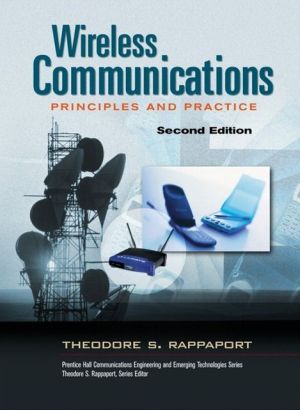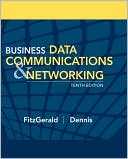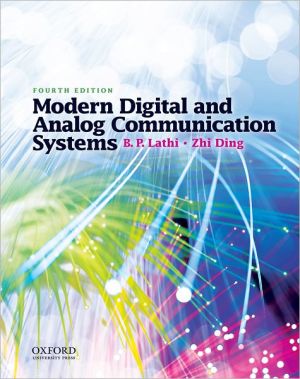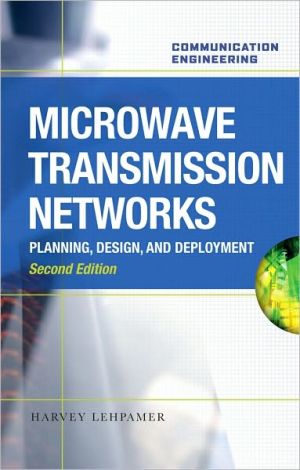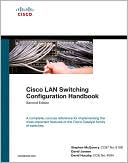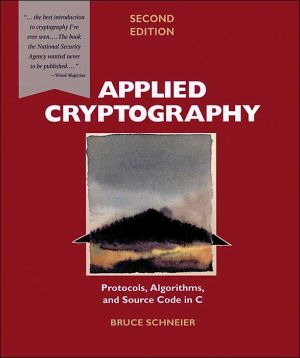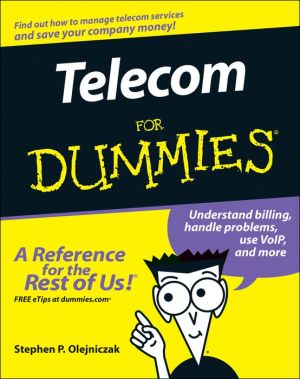Wireless Communications: Principles and Practice
The indispensable guide to wireless communications—now fully revised and updated!\ Wireless Communications: Principles and Practice, Second Edition is the definitive modern text for wireless communications technology and system design. Building on his classic first edition, Theodore S. Rappaport covers the fundamental issues impacting all wireless networks and reviews virtually every important new wireless standard and technological development, offering especially comprehensive coverage of...
Search in google:
Wireless Communications, Second Edition is the definitive professional's overview of wireless communications technology and system design. Building on his classic first edition, Theodore S. Rappaport reviews virtually every important new wireless standard and technological development, including W-CDMA, cdma2000, UMTS, and UMC 136/EDGE; IEEE 802.11 and HIPERLAN WLANs; Bluetooth, LMDS, and more. Includes dozens of practical new examples, solved step by step.
Preface\ The second edition of this text has been written to initiate the newcomer to wireless personal communications, one of the fastest growing fields in the engineering world. Technical concepts which are at the core of design, implementation, research, and invention of wireless communication systems are presented in an order that is conducive to understanding general concepts, as well as those specific to current and evolving wireless communication systems and standards. This text is based upon my experiences as an educator, researcher, technical trainer, and consultant, and continues to be modeled from an academic course first developed for electrical engineering students in 1990, when there were fewer than five million cellular subscribers worldwide. As we begin the 21st century, more than 600 million people, about 10% of the worldÕs population, pay a monthly subscription for wireless telephone service, and this figure will approach 50% by the end of the first decade of the 21st century.\ This text continues to evolve, and has been modified and updated since its first edition, making it a useful book for practicing engineers, as well as for researchers, graduate students, and undergraduate students. The text has been prepared to provide fundamental treatment about many practical and theoretical concepts that form the basis of wireless communications, and has been designed for easy but thorough treatment of vital material that all wireless practitioners must be comfortable with. I have tried to emphasize the technical concepts with worked example problems, and numerous, carefully crafted homework problems at the end of each chapter that are based on real-world industry issues. The second edition contains dozens of new homework problems and examples, as well as up-to-the minute technical details of the many emerging wireless standards throughout the world, making this book particularly useful for industry short-courses or state-of-the-art academic classroom use.\ References to journal articles are used liberally throughout this text to enable the interested reader to delve into additional reading that is always required to master any field. To support newcomers to the wireless field, and at the request of the Institute of Electrical and Electronics Engineers (IEEE), I have also prepared a low-cost two volume compendium of many of the original journal articles that first taught the fundamentals that are now used throughout the wireless industryÑthis compendium series is a useful, but not required, supplement to this text. Whether you intend to use this book for individual study, or for classroom use, or for use as a handbook, this text has been written as a complete, self-contained teaching and reference book. The numerous examples and problems found throughout the text have been provided to help the reader solidify the material.\ This book has been designed for the student or practicing engineer who is already familiar with technical concepts such as probability, communication theory, and basic electromagnetics. However, like the wireless communications industry itself, this book combines material from many different technical disciplines, so it is unlikely that any one person will have had introductory courses for all of the topics covered. To accommodate a wide range of backgrounds, important concepts throughout the text are developed from first principles, so that readers learn the foundations of wireless communications. This approach makes it possible to use this book as a handbook or as a useful teaching tool in a classroom setting.\ The material and chapter sequence in this text have been adapted from an entry-level graduate course which I first taught in 1991 at the Virginia Polytechnic Institute and State University. Chapter 1 demonstrates the historic evolution of the wireless communications industry, and the evolution of wireless systems from first generation analog to second generation (2G) digital systems. Chapter 1 also documents the rapid early growth of cellular radio throughout the world and provides a state of the industry in the mid 1990s. Chapter 2 provides an overview of the major modern wireless communication systems of the 21 st century, such as third generation (3G), Wireless Local Area Networks (WLANs), Local Multipoint Distribution Services (LMDS), and Bluetooth. Chapter 2 causes the reader to see how wireless networks are beginning to penetrate our daily lives for data and multimedia applications, as well as voice service. Chapter 3 covers fundamental cellular radio concepts such as frequency reuse and handoff, which are at the core of providing wireless communication service to subscribers on the move using limited radio spectrum. Chapter 3 also demonstrates the principal of trunking efficiency, and how trunking and interference issues between mobiles and base stations combine to affect the overall capacity of cellular systems. Chapter 4 presents radio propagation path loss, link-budgets, and log-normal shadowing, and describes different ways to model and predict the large-scale effects of radio propagation in many operating environments. Chapter 5 covers small-scale propagation effects such as fading, time delay spread, and Doppler spread, and describes how to measure and model the impact that signal bandwidth and motion have on the instantaneous received signal through the multipath channel. Radio wave propagation has historically been the most difficult problem to analyze and design for, since unlike a wired communication system which has a constant, stationary transmission channel (i.e., a wired path), radio channels are random and undergo shadowing and multipath fading, particularly when one of the terminals is in motion. New material in Chapter 5 also teaches a fundamental and new way of modeling spatial-temporal channels, which is vital for the development of smart antennas and position location systems.\ Chapter 6 provides extensive coverage of the most common analog and digital modulation techniques used in wireless communications and demonstrates tradeoffs that must be made in selecting a modulation method. Issues such as receiver complexity, modulation and demodulation implementation, bit error rate analysis for fading channels, and spectral occupancy are presented. Channel coding, adaptive equalization, and antenna diversity concepts are presented in Chapter 7. In portable radio systems where people communicate while walking or driving, these methods may be used individually or in tandem to improve the quality (that is, reduce the bit error rate) of digital mobile radio communications in the presence of fading and noise.\ Chapter 8 provides an introduction to speech coding. In the past decade, there has been remarkable progress in decreasing the needed data rate of high quality digitized speech, which enables wireless system designers to match end-user services to network architectures. Principles which have driven the development of adaptive pulse code modulation and linear predictive coding techniques are presented, and how these techniques are used to evaluate speech quality in existing and proposed cellular, cordless, and personal communication systems are discussed. Chapter 9 introduces time, frequency, and code division multiple access, as well as more recent multiple access techniques such as packet reservation and space division multiple access. Chapter 9 also describes how each access method can accommodate a large number of mobile users and demonstrates how multiple access impacts capacity and the network infrastructure of a cellular system. Chapter 10 describes networking considerations for wide area wireless communication systems, and presents practical networking approaches that are in use or have been proposed for future wireless systems. Chapter 11 unites all of the material from the first nine chapters by describing and comparing the major existing second generation (2G) cellular, cord-ess, and personal communication systems throughout the world. The tradeoffs made in the design and implementation of wireless personal communications systems are illuminated in this final chapter. The compilation of the major wireless standards makes Chapter 11 particularly useful as a single source of information for a wide range of wireless systems that are commercially deployed today.\ Appendices which cover trunking theory, noise figure, noise calculations, and the Gaussian approximation for spread spectrum code division systems provide details for those interested in solving many practical wireless communications problems. The appendices also include hundreds of mathematical formulas and identities for general engineering work. I have attempted to place numerous useful items in the appendices, so that this text may be easily used by students or practicing engineers to solve a wide range of problems that may be outside the scope of the immediate text.\ For industry use, Chapters 1Ð5, 9, and 11 will benefit working engineers in the cellular/PCS system design and radio frequency (RF) deployment, operations, and maintenance areas. Chapters 1, 2, 6Ð8, and 11 are tailored for modem designers and digital signal processing (DSP) engineers new to wireless. Chapters 1, 2, 10, and 11 should have broad appeal to network operators and managers, business and legal professionals, as well as working engineers.\ To use this text at the undergraduate level, the instructor may wish to concentrate on Chapters 1Ð6, or Chapters 1Ð5, and 9, leaving the other chapters for treatment in a second semester undergraduate course or a graduate level course. Alternatively, traditional undergraduate courses on communications or network theory may find in Chapters 1, 2, 3, 4, 6, 8, 9, and 10 useful material that can be inserted easily into the standard curriculum. In using this text at the graduate level, I have been successful in covering most of the material in Chapters 1Ð6 and 10 during a standard half-year semester and Chapters 7Ð11 in a follow-on graduate course. In Chapters 2, 10, and 11, I have attempted to cover important but rarely compiled information on practical network implementations and worldwide standards.
Preface1Introduction to Wireless Communication Systems12The Cellular Concept - System Design Fundamentals253Mobile Radio Propagation: Large-Scale Path Loss694Mobile Radio Propagation: Small-Scale Fading and Multipath1395Modulation Techniques for Mobile Radio1976Equalization, Diversity, and Channel Coding2997Speech Coding3618Multiple Access Techniques for Wireless Communications3959Wireless Networking43910Wireless Systems and Standards483App. A Trunking Theory555App. B Noise Figure Calculations for Link Budgets565App. C Gaussian Approximations for Spread Spectrum CDMA569App. D Q, erf & erfc Functions593App. E Mathematical Tables599App. F Abbreviations and Acronyms607App. G References617Index635
